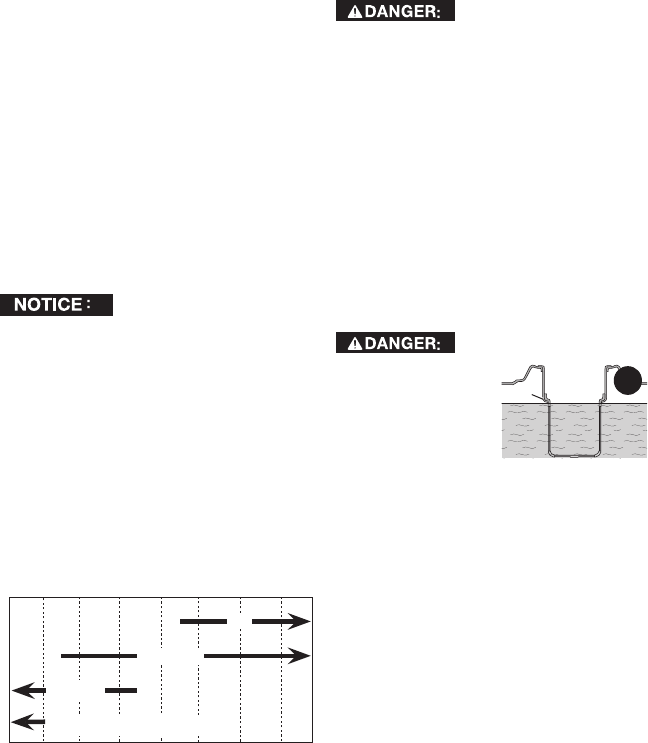
16- ENG
3. Install the axle (QQ) to the lower
chassis. Use bolts (OO), nuts (NN)
and axle strap (PP) for this step.
4. Slide the wheels (EE) on the axle.
Then slide the two washers (DD)
on each end of the axle and secure
with cotter pins (FF), bending one
side of cotter pins.
5. Place the generator upright so it is
resting on the wheels and stands.
Handle Kit Assembly
1. Install handles on the engine side
of the generator by securing each
bracket (GG) with bolts (II) and lock
nuts (JJ).
each bracket (GG) and secure
each with remaining bolts (II) and
lock nuts (JJ)
3. Tighten the bolts until the assembly
is snug.
ADD ENGINE OIL AND FUEL
Risk of property
damage.
The engine
IS NOT
filled with
oil from the factory. Oil must be added to
the engine before operating or damage
to engine may occur.
Oil Recommendations
SAE 10W-30 is recommended for general
use. Refer to the Viscosity-Ambient
Temperature Chart for recommended
oil within your local area’s average
temperature range. NOTE: Synthetic oil
is NOT recommended.
˚F
-20 0 20 40 60 80 100
˚C
-28.8 -17.7 -6.6 4.4 15.5 26.6 37.7
5W-30
10W-30
30
Viscosity-Ambient
Temperature Chart
0W-10 or 0W-30
To add oil (Fig. 2)
1. Refer to Viscosity-Ambient
Temperature Chart for correct
viscosity.
2. Remove dipstick (L).
3. Slowly add recommended oil,
see specifications for oil capacity.
NOTE: If the oil is added too
quickly, it will overflow and appear
to be full.
See Oil under Maintenance for
instructions.
Add fuel to generator (FIG. 1, 5)
Risk of explosion or
fire. Gasoline vapor is highly flammable.
Refuel outdoors preferably or only in
well-ventilated areas. Do not refuel or
check gasoline level while the engine
is running. Do not store, spill or use
gasoline near an open flame, a source
of sparks (such as welding), or near
operating electrical equipment. Do not
smoke when filling fuel tank.
1. Remove fuel cap (D).
2. Add fresh, clean, regular unleaded
gasoline with a minimum of
86 octane to the fuel tank (E).
NOTE: Do not mix oil with
gasoline.
Risk of explosion or
fire. Never fill fuel
QQ
5
tank completely. Do
not fill above the
shoulders on the
debris screen (QQ)
as shown to provide
space for fuel expansion. Wipe any fuel
spillage from engine and equipment
before starting engine.
3. Replace the fuel cap on the tank.
Turn the cap clockwise until it
stops.
Oxygenated Fuels
Some conventional gasolines are
blended with alcohol or an ether
compound. These gasolines are
collectively referred to as oxygenated
fuels. To meet clean air standards,
some areas use oxygenated fuels to
help reduce emissions.
If you use an oxygenated fuel, be sure it
is unleaded and meets the 86 minimum
octane rating requirements. Before
using an oxygenated fuel, try to confirm
the fuel’s contents. Some areas require
this information to be posted on the
pump.


















